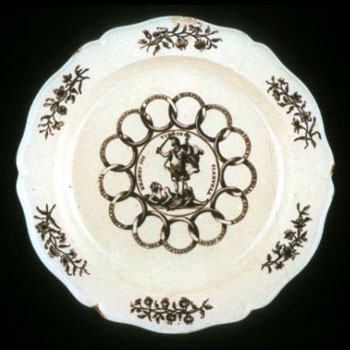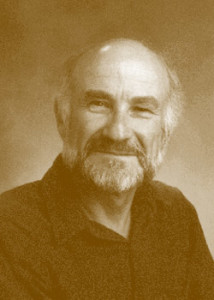History Made from Stories Found

Seeking a microhistory that matters
Well, I say in answer to Common-place‘s question, there are great continuities in addition to the obvious contrasts between my first and second book. In this latest work I am still attempting to be anthropological, but I have had to adapt to my new task and to respond to changes in the relationship between history and anthropology that have profoundly altered my sense of where the ethnography of the past must begin. I have also a new pride in history and its place among the human sciences.
History, I now think, is best understood as “stories that historians write on their own pages fashioned from the stories they find in the archives.” We have a grave responsibility in this—to boldly tell the story that needs to be told without compromising the voices we encounter in the archive. What stories were they telling in their words and deeds? What, for them, was the point? It became my strongest aspiration in Uneasy Kingdom to be attentive to the everyday-life narratives I was absorbing while crafting a story for our times.
I had researched and written Transformationvery consciously as dramaturgic description and narrative. This was my version of the inclusive, “everybody-in” ethnographic history that three of us—Greg Dening, Inga Clendinnen, and myself, all then at the newly established La Trobe University—were teaching each other to write. (Soon a second early Americanist, Donna Merwick, was added to this “Melbourne Group.”) Inspired by my participation in that fellowship, I set out to read colonial Virginia’s historic landscape as a vast stage set; I would learn and represent the culture (or cultures) by the conventionally “scripted” forms of action that occurred on the “sets” designed as courthouses, parish churches, gentlemen’s plantation seats, farmers’ houses, and even the yard spaces of slave quarters. The revolutions that I wanted to narrate, I hoped to reveal in the same way—that is, I would show radically new forms of action transforming the historic landscape. There was illusionism in my approach: I wanted readers to feel as if they were personally watching the action at these characteristic settings. I was a “New Light” historian; the unconverted “Old Light” historians seemed to me to have let history become merely words about words.
I was already uneasy about using narratives from the documentary record to sustain the illusion that one is actually witnessing the action. But my turn toward the story performances in the record was hastened by the serendipity of getting to work with a profound linguist—Alton L. Becker, many of whose wonderful essays have now been collected in Beyond Translation (Ann Arbor, 1995).
Becker takes his readers into the profound dramaturgy of language, which he has explored in many contexts, including Burmese proverbs and the Javanese puppet versions of the Ramayana, as well as the works of his favorite American, Ralph Waldo Emerson. As my mentor, he taught me to parse the central source for my work on Landon Carter—the planter’s personal diary. I was exulted to observe that he seemed to find the old curmudgeon’s sentences as exciting (almost) as those of Emerson or the Ramayana! And it goes on from there—the diarist’s story-telling prowess did not escape the eye of this linguist of rhetorical forms. I was sent to that terribly titled, ought-to-be-a-classic work of a former Becker student, Mary Louise Pratt. I eagerly read Toward a Speech-Act Theory of Literary Discourse (Bloomington, 1977) and learned how a scholar accomplished in this field might use the findings of live-speech linguists to illuminate the performances at the heart of written narrative texts.
I now had a little of the specialist’s equipment needed to address a rare attribute of my primary document. Landon Carter the diarist did not just (as is usual) enter notations of narratable occurrences; time and again he told artfully rendered stories. These—as I could now appreciate—had all the introducing, developing, evaluating, and concluding parts that narratologists have identified as essential to the genre. Realizing the opportunities this created, I wanted to use this diary to explore the potential of stories told in the historical record. I would shift my attention from performance in action to a close concern with the performances in the written documents themselves. Stories became the motif of the new book-in-gestation. The impulse to develop the reading of the Carter diaries in this light was further strengthened when I turned to the diarist’s surviving annotated library. I realized that not just the themes of the day-by-day record but also the accounts of the vast cosmos derived from the books the diarist so keenly read and reread could best be reconstructed by taking up the stories in the books that Carter had embellished with marginal notations. In one of these, Carter offered a sympathetic address to that legendary father of ungrateful children, King Lear. The resulting library chapter, as an experimental venture in the ethnography of texts, became a central essay in my new book.
The diary’s profusion of planter narratives about slaves presented a great challenge. I found myself both pulled back into the methodology of Transformation and propelled further beyond it into the ethnography of the utterance. The stories were representations of actions—performances—that called for interpretation; but the stories were strong performances in their own right. To grasp them, I turned to the literary category “genre” and found I was dealing with an ancient tradition that seemed to have no precise name; I coined the term gentrylore. These are the stories that, ever since humanity divided into exploiters and exploited, the masters have told each other about the waywardness of their laborers. (Henceforth, wherever I had the opportunity to meet with Europeanists, Asianists, and Latin Americanists, I would ask for equivalent recorded narratives from some other landlord-peasant society. No one has yet come up with a match, and so I have reached the provisional conclusion that Landon Carter’s diaries may be the biggest collection of told-from-life “is-my-servant-more-drunken-fool-than-thieving-knave?” stories in all the world’s literatures!)

The discovery that the diary included so much of an ancient, important, and yet much neglected genre, was an exciting one, but I could not leave it at that. Landon’s enslaved people should not appear framed only in gentrylore. I felt compelled to tap into other traditions to get closer to the stories the enslaved might have told of themselves. That took me to African and African American folklore, with Roger D. Abrahams as my chief guide and mentor. I came also to the 1930s WPA ex-slave narratives. By close attention to the genres of these narratives and to their distinctive themes, I would honor the traditions that had kept alive an oral history of slavery told by Virginians who had endured it; I would use their testimony to answer a master’s tales with matching narratives drawn from the oppressed. I would be making no claim that I could “upstream” and use 1930s memoirs to gain access to the consciousness of Landon’s slaves; but I would be including voices whose framing of experience drew on deep African American traditions.
Historical inquiry may often be blocked by the prior agenda of the historian. I was earnestly seeking “the world of Landon Carter” through his diaries, when—quite late in the work—I suddenly saw that the compulsive telling of stories had a distinct beginning in the diary. The flow of dramatic stories that would become a flood started in the little volume for 1766. This was the year that opened with all the American colonies effectively in rebellion against their king’s imperial government. Landon was a passionate American patriot, but he loathed the rebellion forced upon him and his peers by the betrayals of the king’s ministry and the Parliament they had evidently bought. Suddenly the diary began to fill out with angrily told stories of rebellions in Landon’s own little kingdom. Indeed a whole Virginia Anglican jeremiad began to be unleashed in this diary!
I concluded from the synchronicity of the diary’s rebellion stories and the mounting colonial resistance to imperial assertion that there was a deep thematic relationship between the conflicts of the little realm and the politics of the great kingdom. The synchronicity became positively eerie in the crisis time when Landon (and all the patriots) had to recognize that the great betrayal stemmed from the king himself. I could measure how the intensity of father-son clashes in the diarist’s own house increased to the most extreme levels during the spring of 1776 when Landon knew that revolution—a decisive break—must soon come. Reading the diary in this light, I saw an opportunity to open up for readers the family-drama aspect of the American Revolution—a version much in need of telling if the magnitude of what was begun in that birth-of-modern-politics upheaval is to be grasped. Landon Carter’s long-kept series of diaries powerfully bears witness to the conflicted emotions racking the American patriots during their great struggle.
Responding to this invitation to compare Uneasy Kingdom with Transformation, I become self-conscious about the increasing engagement of my work with what is now called microhistory, but—as I have shown—big history has been equally an obsession of mine. So I do not apologize for focusing on something as “small” as a diary. History is the most particularizing of the social sciences; it must stand tall to remind the others of the power of contingency in human life. For all that historians should study hard to understand the cultural, structural, and economic systems by which societies work, they have a responsibility also to proclaim the deep truth that the world is what it is because of the particular sequences of what has been done. This is not just a stand in a scholars’ debate; it is an affirmation of the possibilities of changing the disposition of things. The future is always being made by the present generation. I am proud to be a historian even as I tell myself that the strongest lesson that the discipline teaches is that, however we read the signs of doom and gloom, we cannot predict the future. The shape of the world to come remains to be made by human action in circumstances that can never be foretold.
This article originally appeared in issue 6.1 (October, 2005).
Rhys Isaac was born one of identical twins at the Cape of Good Hope in what is now the Republic of South Africa; after study at the University of Cape Town and Oxford University he has taught history in Australia and researched it in the United States for more than forty years. Common-place asks Isaac, who now straddles two worlds as a professor of history at La Trobe University, Australia, and at the College of William and Mary, what are the principal differences between the approach adopted in his new book, Landon Carter’s Uneasy Kingdom (New York, 2004), and the approach of his celebrated earlier work, The Transformation of Virginia (Chapel Hill, 1982).
